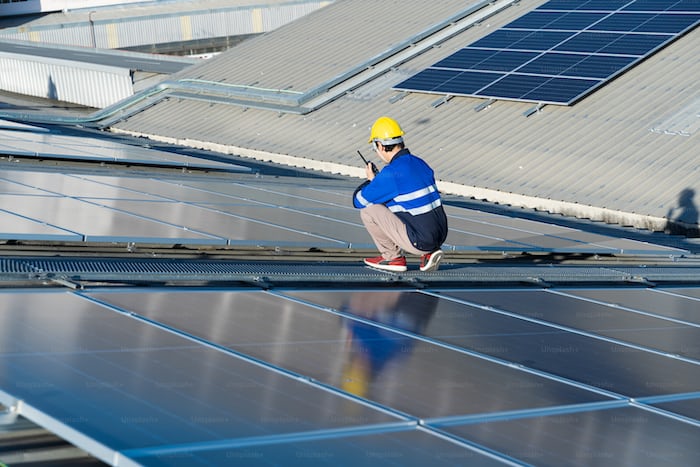Leasing Land for Solar Development Important Considerations in 2023

As the demand for renewable energy grows, leasing private land for large-scale solar development presents new income opportunities for landowners. However, signing long-term solar leases requires extensive due diligence as it can profoundly impact properties for decades. Carefully examining key considerations before finalizing agreements empowers landowners to maximize benefits and minimize risks.
Evaluate the Developer
Thoroughly research potential solar partners and their industry track record. Learn about the developer’s finances, number of completed projects, business ethics and safety standards. Request references from people who currently lease land to them for solar arrays. Visiting existing solar installations personally can provide insights into maintenance practices and operational procedures. An experienced developer with a proven history of successfully building and maintaining utility-scale projects substantially reduces risks compared to new startups lacking long-term viability. Partnering with a reputable solar company committed to transparency, fair dealings, and site stewardship lays the foundation for a mutually beneficial relationship over the duration of the multi-decade land lease.
Understand the Lease Agreement
Leasing land for a solar farm and generating solar energy requires extensive legal agreements. Consult an attorney to review the contract terms. Clarify all details regarding duration, payments, restoration, access, liability, insurance, and termination. Typically, leases last 20-30 years or more. Negotiate terms that are most favorable to you before signing anything. Understand your rights, responsibilities, and potential pitfalls when deciding to lease land to a solar farm. The lease will dictate the relationship, so scrutinize it carefully.
Research the Financial Compensation
Lease payments should reflect solar market rates in your region. Payments are usually annual, starting low but escalating over time. Calculate the present value of future payments to understand total compensation. Negotiate a fair price per acre based on the projected energy production. Leases may also include signing bonuses, energy credits or community incentives. Consult legal and financial advisors to maximize your financial return. The lease should clearly define compensation terms and schedules.
Limit Land Impact
Solar arrays require clearing vegetation and grading land. Stipulate allowable acreage for arrays, access roads and utility lines. Specify the locations to preserve. Limit erosion by maintaining vegetative buffers around waterways. Define requirements to control runoff and drainage. Leases typically mandate site restoration upon termination. Review options like sheep grazing to control vegetation under panels. Minimize negative land impacts through careful lease provisions.
Understand Tax Implications
While lease revenue provides new income, it can impact property taxes or inheritance taxes. Leased acreage may get reclassified as commercial property, increasing tax assessments. Lease payments count as rental income. Consult tax experts to maximize write-offs, such as depreciation and operating expenses. Doing so optimizes after-tax income. Leasing land for decades also complicates estate planning. Carefully consider potential tax ramifications.
Check Solar Easement Rights
Solar easements guarantee access to sunlight. Leases can grant solar developers easement rights over other parts of your property. This prevents new structures that could shade solar arrays. Understand the legal easement implications for current and future land uses. Prevent overly broad easements that limit farming activities or building structures. Check easement rights for roads, power lines and other utility access too. Scrutinize solar easements in the lease.
Address Liability Concerns
Leasing land for industrial use brings liability risks. Negotiate insurance requirements to protect your interests. Ensure the company’s general liability policy has adequate limits. Require being named as an additional insured party. Indemnification clauses should cover damage claims caused by solar operations. Install perimeter fencing around arrays to prevent injury lawsuits. Liability coverage is essential protection when leasing land.
Monitor Decommissioning Plans
Solar equipment gets decommissioned someday. Handling equipment removal is expensive. Lease language should mandate removing all infrastructure to reclaim land for agricultural use upon termination. The agreements must specify decommissioning requirements and financial assurances. Get cost estimates from contractors. Make sure bonds or letters of credit adequately cover eventual removal costs.
Research Future Energy Storage
Some solar developers also install large battery facilities onsite. These stores store energy for delivery during peak demand periods. Battery technology poses new safety issues, though. Understand the potential fire and environmental risks that energy storage brings. Address hazards through lease provisions requiring secure battery installations and ample liability insurance. Consider whether battery storage aligns with your goals for the land.
Analyze Circumstances Carefully
There are many variables to weigh with solar leases. Location, acreage, microclimates, soils,viewsheds, access, erosion, drainage, setbacks, woodlands, and more all factor in. Evaluate solar development impacts on entire property, not just leased parcels. How does it affect farming operations, aesthetics, and future plans? Get input from all family members, too. Think through both current and long-term implications before finalizing a multi-decade solar lease.
Talk With Other Landowners
Speaking with neighbors who already lease land to solar companies provides valuable insights. Ask about their experience with certain developers. Discuss lease terms, construction, payments and ongoing management. Learn what they would do differently. Actual landlord experiences reveal much more than sales pitches. Associations like the American Solar Energy Society connect people experienced with solar land leases. Seek local knowledge.
Hire an Expert Solar Consultant
Special consultants exist to help landowners negotiate solar leases. For major projects, their advisory services pay dividends compared to potential risks and profits. Experts evaluate sites, model production, estimate taxes, suggest lease rates, review contracts and give unbiased insights. They negotiate optimal terms on your behalf. While adding some upfront costs, knowledgeable experts maximize lease benefits over decades.
Frequently Asked Questions
What determines a fair solar lease rate?
Lease rates depend on location, market conditions, project size, and contract terms. Current averages span $600 – $700 per acre annually but may rise with land productivity incentives.
How do I balance my environmental needs when leasing land?
Request an ecological impact assessment focused on habitat preservation and engage with local conservation groups. Consider dual-use solar approaches to repurpose agricultural land efficiently.
What legal provisions protect my interests?
Well-drafted lease agreements clearly define financial terms, land-use rights, maintenance liabilities, decommissioning, dispute resolution, and other key provisions while consulting qualified legal counsel.
Conclusion
Leasing open land for solar development can provide reliable income for decades. But it also involves long-term property commitments. Carefully examining all solar lease considerations before signing helps ensure the best outcomes. Conduct thorough due diligence on the developer, finances, land impacts,decommissioning, insurance, taxes and contract terms. Seek legal and tax guidance. Talk to solar land experts and farmers who lease property. Making informed leasing decisions empowers landowners. With careful analysis, solar leases can generate major new revenue streams through renewable energy production.



